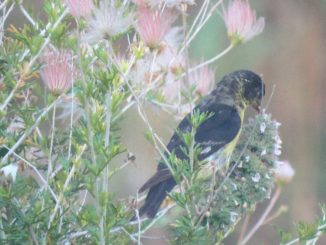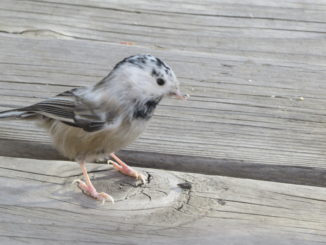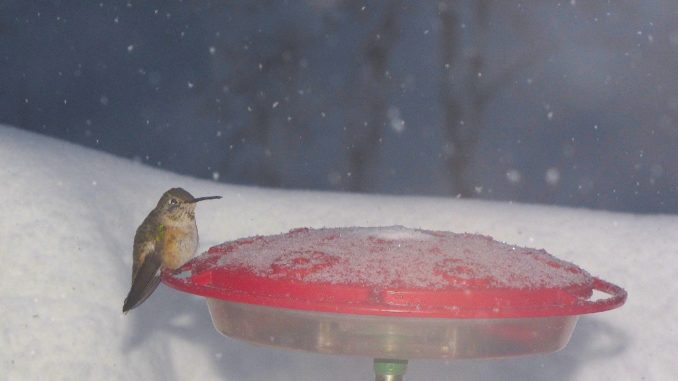
Sally Roth
[email protected]
I can always tell when I’ve been whining too much about the weather at our place in the high foothills. That’s when a friend from the lowlands reins me in with the simple comment, “Life is tough in the mountains.”
Okay, okay, I’ll try to stop complaining. But my whining is hard to control in spring.
Heck, I’ve had spring fever since late January, bringing pussywillow branches in to coax into early bloom, obsessing over plant catalogs, going through leftover seed packets and arranging them into “maybe this year,” “try, try again,” and ”nope, no hope of growing that” piles.
“March and April are our snowiest months,” people warned me when I first moved here. Then they added an even more deflating bit of info: “And there’s often a big snow around Mother’s Day.”
Mother’s Day?! But…but…hummingbirds come back in April! Shouldn’t there be a zillion flowers blooming to welcome them?
Not for these hummingbirds. Life is tough in the mountains, and they’re used to it.
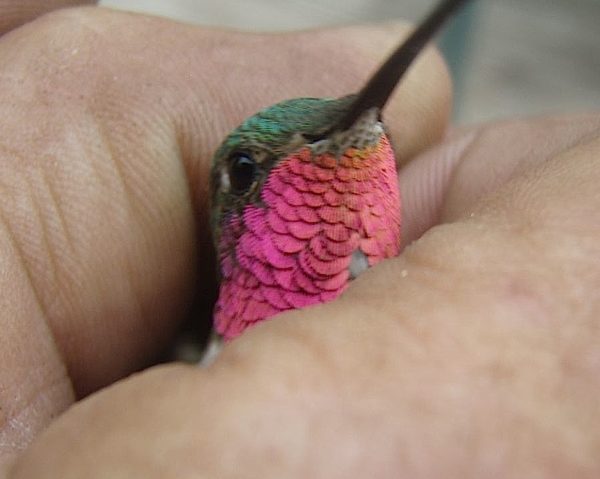
We keep our door wide open in warm weather, which can lead to unexpected guests early in the season. By the end of summer, we have them trained to obey the command, “Out! Out!”
Broad-tailed hummers, the most common and abundant species in our region, have had eons to adapt. And, boy, are their habits perfectly suited to life here!
Let’s start with the banquet of food that’s waiting for them when they arrive in mid- to late April after their journey from wintering grounds in Mexico and Central America.
First course: Not flowers, but sap. And bugs.
Not long before hummingbirds return, red-naped sapsuckers come back for the season. They immediately get busy drilling rows of “sap wells” in the trees, so the sticky stuff will flow and attract lots of tiny insects.
Yum, say arriving hummingbirds, which depend on that sap, and those insects, to fill their bellies.
That vase of pussywillows on my desk? By April, they’re blooming along the creeks, too, dusted yellow with pollen, because each one of those fuzzy catkins is actually a collection of a zillion tiny flowers. Hummers seek them out for nectar—and more bugs.
Both of those early-menu mainstays are well above even a 3-foot spring snow, so they’re still accessible to hungry hummingbirds.
If the weather turns bitter cold, hummers have another trick up their sleeves. They go into a state of suspended animation called torpor, slowing down their heartbeat and respiration to stay just barely alive, until the warming sun brings them back to “life.”
The great thing about spring in the mountains? Once it kicks into gear, it moves fast, and soon meadows and gardens are burgeoning with flowers.
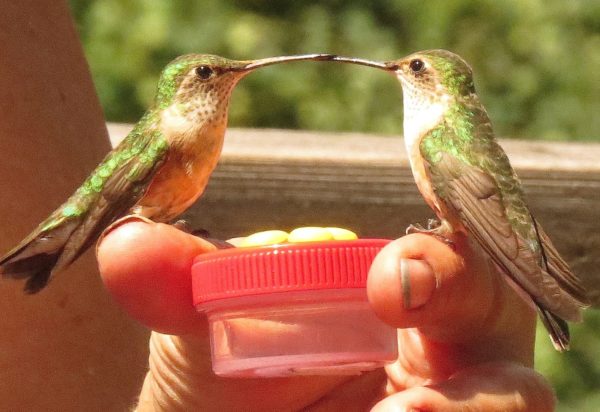
Bring a mini nectar feeder and a bottle of pre-mixed sugar water to fill it, if you’re planning a drive to the mountains or a camping trip. Broad-tailed hummingbirds (these are females) will quickly zero in on it.
That first hummingbird, though, is always cause for celebration.
“Heard a hummingbird!”
Yep, you’ll hear these guys way more often than you see them. The unique wing feathers of the males, sharply pointed at the tips and held separated, produce a loud metallic trill when the bird zooms about.
The trill is so loud, we can hear it while driving if the window is cracked.
“Hummingbird!” “Hummingbird!” “Hummingbird!” We delightedly announce every one we hear while driving home from town, tracking the migration up to the mountains by the sound of hummingbird wings.
Some broad-tailed hummers live and nest at lower elevations, including Fort Collins and other Front Range towns, but most head for the hills. This is a mountain species, so look and listen for them when you take a drive or go hiking.
And if you live where “life is tough,” get ready for the coming swarm. Broad-tailed hummers congregate at higher elevation nectar feeders by the score, and the noise is so loud that when they go home for the night—all at once, as if someone flipped a switch—all we can say is “Ahhh” at the sudden silence.
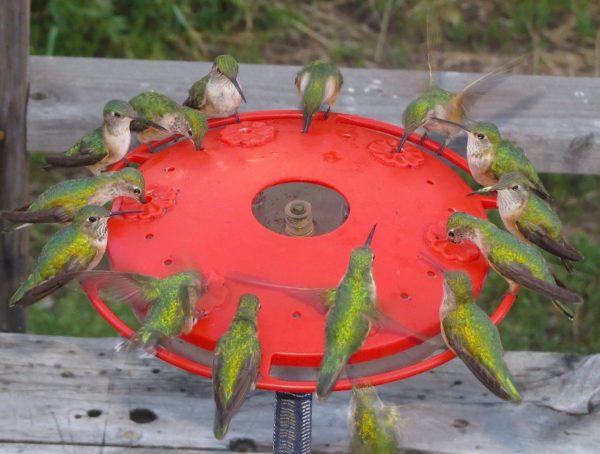
Homes are far apart in the high foothills, so a nectar feeder gets lots of customers.
Support Northern Colorado Journalism
Show your support for North Forty News by helping us produce more content. It's a kind and simple gesture that will help us continue to bring more content to you.
BONUS - Donors get a link in their receipt to sign up for our once-per-week instant text messaging alert. Get your e-copy of North Forty News the moment it is released!
Click to Donate


